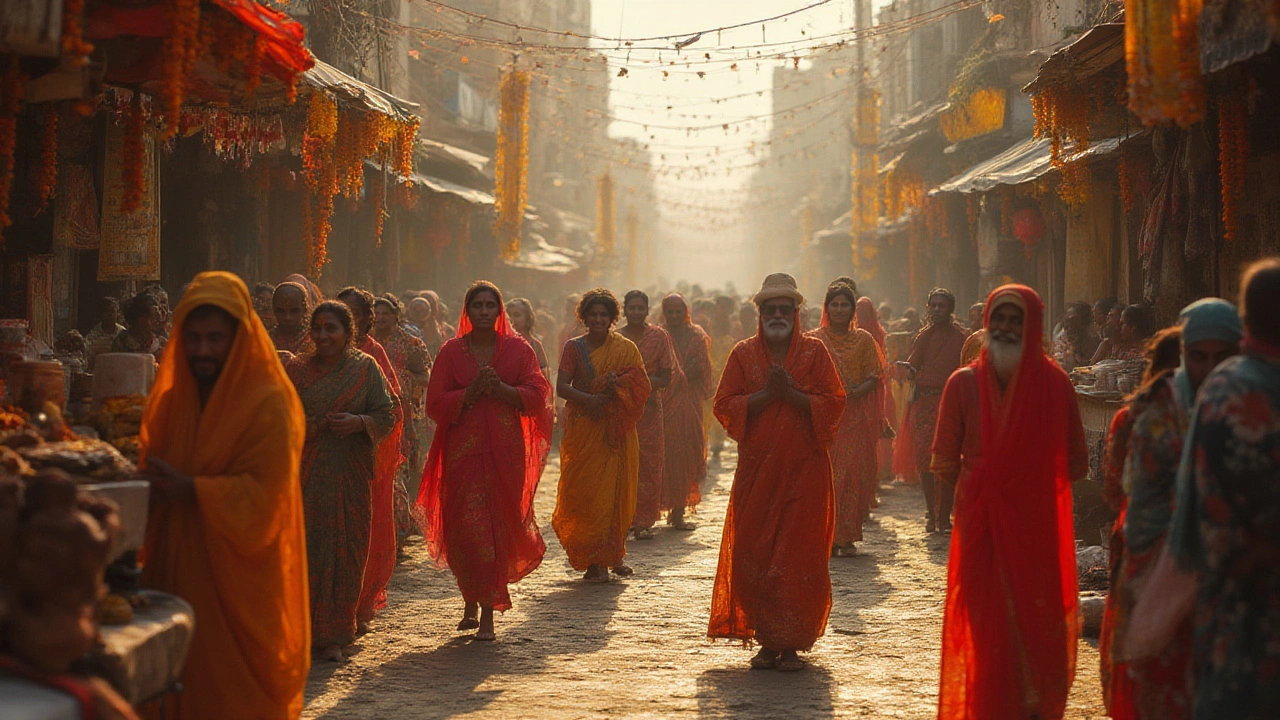
Uncover the world’s most immersive cultural travel experiences. Get tips on places where you can truly connect with local traditions, cuisine, and people.
When talking about Unique Traditions, the distinct customs, rituals and cultural expressions that set one community apart from another, you’re really diving into the soul of a place. These practices aren’t just old habits; they’re living stories that travelers can see, hear and feel. Think of a festival that lights up the night sky, a pilgrimage that has guided generations, or a temple ritual that brings tears to visitors – each moment is a piece of a larger cultural puzzle.
Below are some of the key pillars that give shape to unique traditions across India. Cultural Heritage, the preserved monuments, art forms and historic sites that embody a region’s identity acts as the stage where rituals unfold. Rituals, the repeated ceremonial actions that mark life events or seasonal changes provide the script. Pilgrimage, the journey to sacred sites undertaken for spiritual or cultural reasons offers the pathway that links community, belief and geography. Together, they create a dynamic web where every tradition influences another.
What makes these traditions truly unique is the way they blend history with everyday life. For instance, the emotional response many feel at Indian temples—explored in our article about why people cry during temple visits—stems from centuries‑old legends, architectural grandeur and personal devotion. Similarly, the mystery around a possible 13th Jyotirlinga shows how myth and scholarly research collide, keeping pilgrims curious and engaged. Even the debate over why Kedarnath isn’t part of the Char Dham highlights how regional histories shape pilgrimage routes, adding nuance to what might seem like a static list of holy places.
Our collection also touches on the broader backdrop of heritage that protects these customs. Madhya Pradesh holding the record for the most heritage sites illustrates how a state can become a living museum, preserving everything from forts to folk dances. The tie‑in with India’s oldest cities, Varanasi and Ujjain, reveals how continuous habitation fuels evolving rituals—each generation layering new meanings onto ancient streets. Even the discussion on wildlife sanctuaries and hill stations, while seemingly unrelated, shows the environmental contexts where many rituals take place, such as river‑bank festivals or mountain pilgrimages.
Scrolling down, you’ll find articles that break down specific traditions, explain their origins, and give practical tips for experiencing them responsibly. From the colorful festivals that mark harvest cycles to the quiet, reflective journeys along pilgrim paths, each piece offers actionable insights. We also cover safety and health advice for travelers wanting to join these events, ensuring you can enjoy the authenticity without missing essential precautions.
All this material is curated to give you a clear map of India’s cultural landscape. Whether you’re planning a trip, researching a project, or simply curious about how rituals shape society, the posts below will equip you with facts, stories and ready‑to‑use advice. Let’s jump into the rich tapestry of customs that make India unforgettable.

Uncover the world’s most immersive cultural travel experiences. Get tips on places where you can truly connect with local traditions, cuisine, and people.